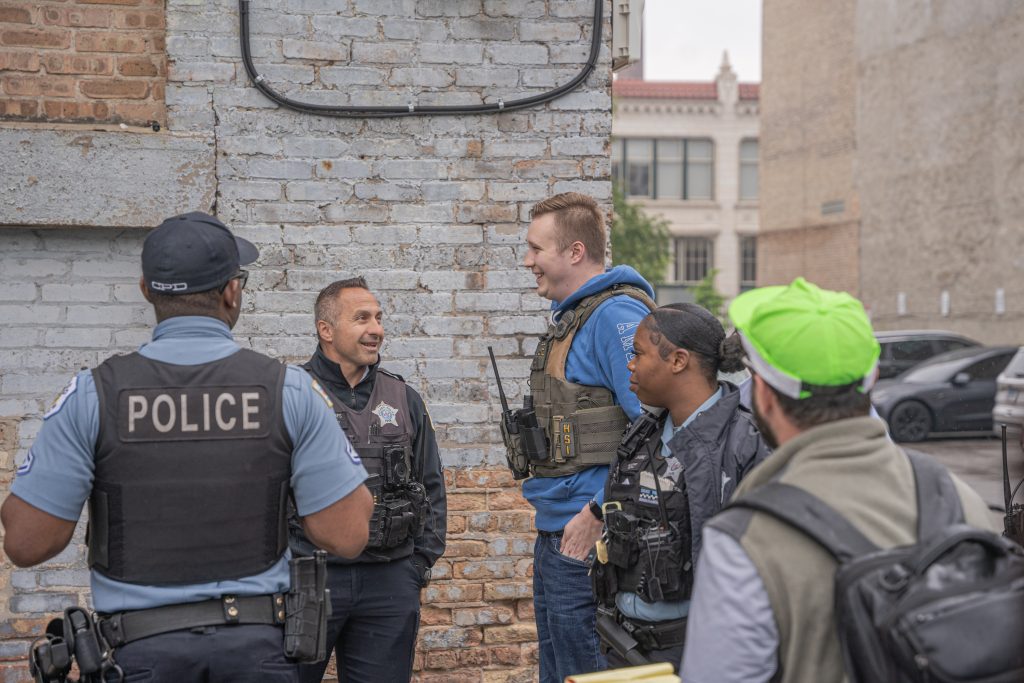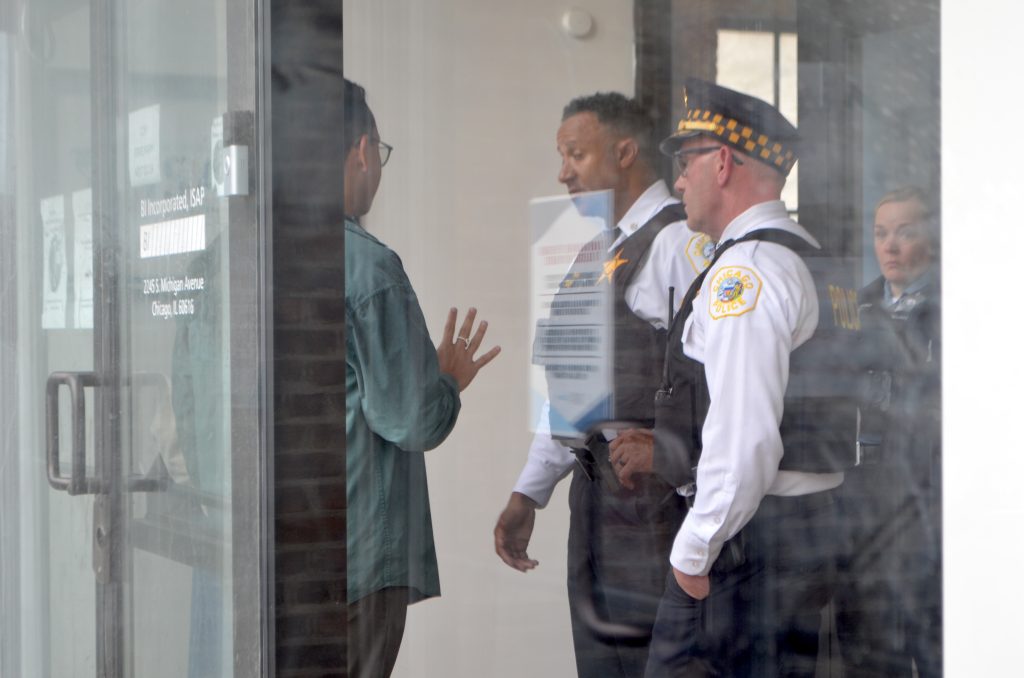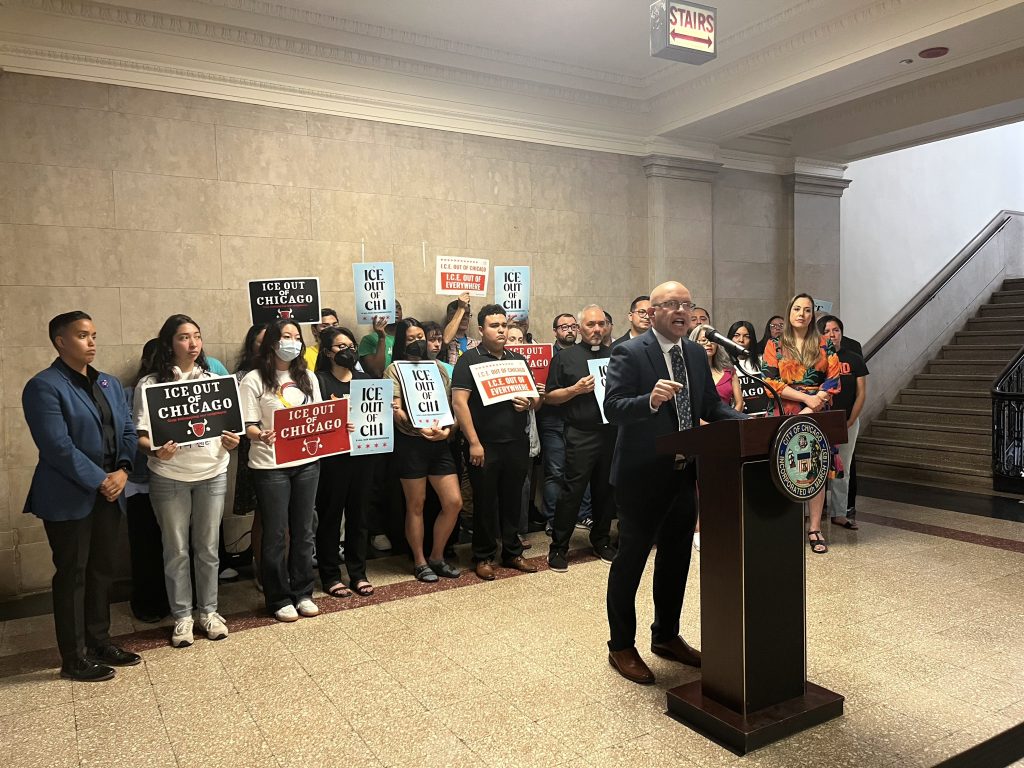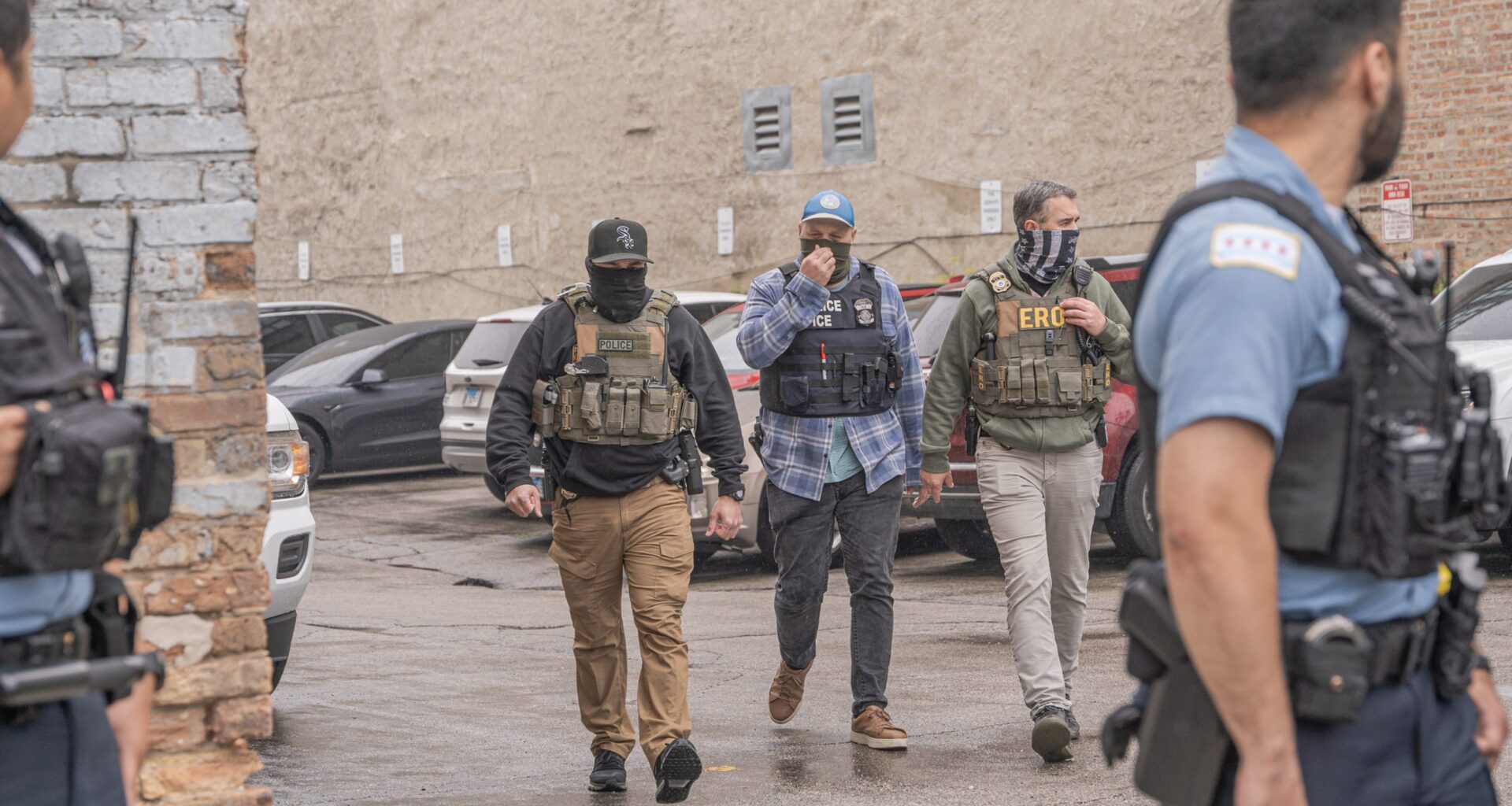CITY HALL – Nearly a month after federal immigration agents arrested at least 10 people during surprise check-ins at a South Loop office, city agencies are still trying to figure out who’s responsible for investigating whether Chicago police improperly aided the effort.
At a meeting of the City Council’s immigration committee Tuesday, Ald. Andre Vasquez (40th), the committee’s chair, called on police, city officials and leaders of police oversight bodies to look into whether officers violated the city’s sanctuary protections during the June 4 arrests.
City officials, however, could not decide Tuesday who is responsible for carrying out such a probe.
Officials from the Civilian Office of Police Accountability (COPA), the city’s chief police watchdog, said Tuesday that any investigation of police violating the Welcoming City ordinance — which bars Chicago law enforcement from assisting in federal immigration operations — fell outside its scope.
“Whether we’re talking the Mayor’s Office, Chicago Police Department, the Office of the Inspector General, COPA, Bureau of Internal Affairs, at this moment, 27 days later, there is no completed investigation that we know of,” Vasquez said.
“We don’t have any insight. We don’t have any oversight,” Vasquez added after the meeting.
Lakenya White, interim chief administrator for COPA, said an investigation should be the responsibility of the Office of the Inspector General. White said that, under city code, violations of the city’s Welcoming City ordinance are not included under the types of police misconduct that COPA investigates. The police department’s Bureau of Internal Affairs also cannot investigate officers’ actions on June 4 because of conflicts of interest, White said.
Investigating the police department’s response on June 4 is key to understanding how police and city departments are following the Welcoming City ordinance amid an escalating focus by President Donald Trump’s administration on immigrant communities, Ald. Michael Rodriguez (22nd) said at a press conference earlier Tuesday.
Since June 4, Vasquez and other members of the council’s Latino Caucus have called for an investigation into the police department’s response that day. Officials were told in prior meetings with police Supt. Larry Snelling and the Mayor’s Office that an internal investigation was ongoing, Vasquez said.
Yet top city officials could not respond Tuesday to questions over the results of that investigation. Garien Gatewood, the city’s deputy mayor of community safety, did not share a timeline of when it will be completed and whether its findings would be made public.
 Chicago Police officers speak with federal agents — including ICE, ERO and HSI, detain several people at the Intensive Supervision Appearance Program office, 2245 S. Michigan Ave., in South Loop on June 4, 2025. Credit: Sebastián Hidalgo for Block Club Chicago
Chicago Police officers speak with federal agents — including ICE, ERO and HSI, detain several people at the Intensive Supervision Appearance Program office, 2245 S. Michigan Ave., in South Loop on June 4, 2025. Credit: Sebastián Hidalgo for Block Club Chicago
 Chicago police speak with Ald. Anthony Quezada (35th) inside tthe Intensive Supervision Appearance Program office, 2245 S. Michigan Ave., in South Loop on June 4, 2025. Credit: Francia Garcia Hernandez/Block Club Chicago
Chicago police speak with Ald. Anthony Quezada (35th) inside tthe Intensive Supervision Appearance Program office, 2245 S. Michigan Ave., in South Loop on June 4, 2025. Credit: Francia Garcia Hernandez/Block Club Chicago
At least 10 noncitizens were detained during surprise immigration check-ins at an ICE-contracted office in the South Loop on June 4. News of the arrests spread quickly, with protesters and City Council members rallying to the scene, which saw tense moments between law enforcement and protesters.
The “unprecedented” situation raises questions about which oversight body is responsible for this type of an investigation and how police should respond to incidents when U.S. Immigration and Customs Enforcement (ICE) agents are present, Vasquez said.
“It is our responsibility to clarify those things and figure out that protocol swiftly,” Vasquez said.
White told the committee Tuesday that COPA received two complaints about police officers assisting immigration agents that day, but determined that the complaints fell outside the agency’s scope.
Inspector General Deborah Witzburg said the Welcoming Ordinance states that complaints about officials who are not members of the police should be investigated by her office. If it was meant to include police, Witzburg believes the ordinance wouldn’t make that distinction, she said.
“Nonetheless, the highest priority here seems to me to be accountability and transparency,” Witzburg said. “[The Office of the Inspector General] will ensure that this incident is investigated in a way which is complete, thorough, objective and fair.”
According to city ordinances, the Office of the Inspector General could review any investigation into the June 4 incident that is completed by the police department’s Bureau of Internal Affairs or by COPA, Witzburg said. But if no police oversight body investigates, the Office of the Inspector General could launch its own investigation, she said.
Witzburg warned, however, that doing so “will be less publicly transparent than the one conducted by COPA or internal affairs,” citing the inspector general office’s rules of confidentiality.
Ald. Jessie Fuentes (26th) said Witzburg’s office should not investigate the incident, saying that the public deserves “full transparency” over what happened on June 4.
“We have for years been telling people that they are safe in the city of Chicago because we uphold the Welcoming City ordinance and yet we are sitting in this committee hearing debating whose jurisdiction it is to investigate this,” she said. “We should be ashamed of ourselves.”
Also Tuesday, the council’s immigration committee approved an order calling for both the police department and the city’s department of emergency management to provide records, including police body camera footage and records of communications, from the June 4 incident. The order still needs full City Council approval.
 Ald. Michael Rodriguez (22nd) joins immigrant rights advocates and elected officials calling for an investigation and records looking into Chicago police’s presence during a June 4 ICE mass arrest operation in the South Loop. Credit: Francia Garcia Hernandez/Block Club Chicago
Ald. Michael Rodriguez (22nd) joins immigrant rights advocates and elected officials calling for an investigation and records looking into Chicago police’s presence during a June 4 ICE mass arrest operation in the South Loop. Credit: Francia Garcia Hernandez/Block Club Chicago
Chicago police officers responded to three emergency calls for assistance at the site of the immigration arrests June 4.
The first call was made by an ICE contractor, reporting a large crowd of 20 to 30 protesters on private property. The second call came from the Crime Prevention Information Center requesting assistance for federal agents surrounded by protesters. The third call was made by a member of the Department of Homeland Security requesting assistance, said Chenetra Washington, deputy director of 911 operations for the city’s Office of Emergency Management and Communications.
A police car and a field supervisor were dispatched without officers knowing they were responding to an immigration raid, according to Glen Brooks, director of community policing for the Chicago Police Department. Officers who arrived at the scene assessed the situation and asked for a supervisor, which led to top officials arriving on scene, he said.
Police did not assist ICE agents, detain or transport any noncitizens on June 4, Brooks told the committee Tuesday. Officers decided to stay at the scene “given that the large crowd gathered outside was filling into a very busy arterial street,” Brooks said.
“CPD was seen to ensure the safety of everyone in the area, including those who are outside the building, exercising their First Amendment practice,” he said.
Organizers and neighbors, however, have questioned why police officers blocked access to an adjacent parking lot. Officers were also seen inside the building where ICE officials detained at least ten people, several immigrant rights leaders and organizers have said.
Chicago police officers created “a pathway” for ICE agents, facilitating their operations, organizers said at a press conference Tuesday morning.
Immigrant advocates have also called on the city to “use every tool and creative solution to protect Chicago residents from ICE abductions” and develop a clear plan of action if ICE uses immigration raid tactics seen in Los Angeles, said Fred Tsao, senior policy council of the Illinois Coalition for Immigrant and Refugee Rights.
“We want to see body cam footage of what was the discourse and conversation between Chicago police and ICE agents,” Fuentes said. “There’s so much that could have happened inside this office and we don’t know.”
Listen to the Block Club Chicago podcast:
Related
